Buckinghamshire
Buckinghamshire (/ˈbʌkɪŋəmʃər, -ʃɪər/), abbreviated Bucks,[2] is a ceremonial county in South East England which borders Greater London to the south east, Berkshire to the south, Oxfordshire to the west, Northamptonshire to the north, Bedfordshire to the north east and Hertfordshire to the east.
| Buckinghamshire | |||||
|---|---|---|---|---|---|
| Ceremonial county | |||||
| |||||
| Motto: Vestigia nulla retrorsum ("No turning back / We do not retreat") | |||||
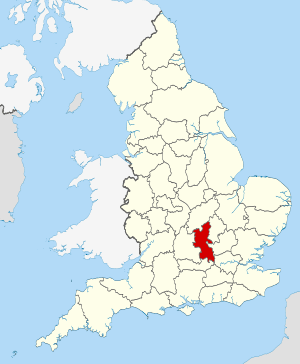 | |||||
| Coordinates: 51°50′N 0°50′W | |||||
| Sovereign state | United Kingdom | ||||
| Constituent country | England | ||||
| Region | South East | ||||
| Established | Ancient | ||||
| Ceremonial county | |||||
| Lord Lieutenant | Henry Aubrey-Fletcher | ||||
| High Sheriff | Andrew Farncombe[1] (2020–21) | ||||
| Area | 1,873.58 km2 (723.39 sq mi) | ||||
| • Ranked | 32nd of 48 | ||||
| Population (mid-2019 est.) | 808,666 | ||||
| • Ranked | 30th of 48 | ||||
| Density | 432/km2 (1,120/sq mi) | ||||
| Ethnicity | 91.7% White 4.3% S. Asian 1.6% Black | ||||
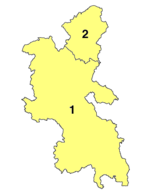 Districts of Buckinghamshire Unitary | |||||
| Districts |
| ||||
| Members of Parliament | List of MPs | ||||
| Police | Thames Valley Police | ||||
| Time zone | Greenwich Mean Time (UTC) | ||||
| • Summer (DST) | British Summer Time (UTC+1) | ||||
Buckinghamshire is one of the home counties and towns such as High Wycombe, Amersham, Chesham and the Chalfonts in the east and southeast of the county are parts of the London commuter belt, forming some of the most densely populated parts of the county. Development in this region is restricted by the Metropolitan Green Belt. Other large settlements include the county town of Aylesbury, Marlow in the south near the Thames and Princes Risborough in the west near Oxford. Some areas without direct rail links to London, such as around the old county town of Buckingham and near Olney in the northeast, are much less populous. The largest town is Milton Keynes in the northeast, which with the surrounding area is administered as a unitary authority separately to the rest of Buckinghamshire. The remainder of the county is administered by Buckinghamshire Council as another unitary authority. In national elections, Buckinghamshire is considered a reliable supporter of the Conservative Party.
A large part of the Chiltern Hills, an Area of Outstanding Natural Beauty, runs through the south of the county and attracts many walkers and cyclists from London. In this area older buildings are often made from local flint and red brick. Many parts of the county are quite affluent and like many areas around London this has led to high housing costs: several reports have identified the market town of Beaconsfield as having among the highest property prices outside London.[3][4] Chequers, a mansion estate owned by the government, is the country retreat of the incumbent Prime Minister. To the north of the county lies rolling countryside in the Vale of Aylesbury and around the Great Ouse. The Thames forms part of the county's southwestern boundary. Notable service amenities in the county are Pinewood Film Studios, Dorney rowing lake and part of Silverstone race track on the Northamptonshire border. Many national companies have head-offices or major centres in Milton Keynes. Heavy industry and quarrying is limited, with agriculture predominating after service industries.
History

The name Buckinghamshire is Anglo-Saxon in origin and means The district (scire) of Bucca's home. Bucca's home refers to Buckingham in the north of the county, and is named after an Anglo-Saxon landowner. The county has been so named since about the 12th century; however, the county has existed since it was a subdivision of the kingdom of Mercia (585–919).
The history of the area predates the Anglo-Saxon period and the county has a rich history starting from the Celtic and Roman periods, though the Anglo-Saxons perhaps had the greatest impact on Buckinghamshire: the geography of the rural county is largely as it was in the Anglo-Saxon period. Later, Buckinghamshire became an important political arena, with King Henry VIII intervening in local politics in the 16th century and just a century later the English Civil War was reputedly started by John Hampden in mid-Bucks.[5]
Historically, the biggest change to the county came in the 19th century, when a combination of cholera and famine hit the rural county, forcing many to migrate to larger towns to find work. Not only did this alter the local economic situation, it meant a lot of land was going cheap at a time when the rich were more mobile and leafy Bucks became a popular rural idyll: an image it still has today. Buckinghamshire is a popular home for London commuters, leading to greater local affluence; however, some pockets of relative deprivation remain.[6]
The expansion of London and coming of the railways promoted the growth of towns in the south of the county such as Aylesbury, Amersham and High Wycombe, leaving the town Buckingham itself to the north in a relative backwater.[7] As a result, most county institutions are now based in the south of the county or Milton Keynes, rather than in Buckingham.
Geography
The county can be split into two sections geographically. The south leads from the River Thames up the gentle slopes of the Chiltern Hills to the more abrupt slopes on the northern side leading to the Vale of Aylesbury and the Borough of Milton Keynes, a large and relatively level expanse of land that is the southern catchment of the River Great Ouse.
Waterways
Rivers
The county includes parts of two of the four longest rivers in England. The River Thames forms the southern boundary with Berkshire, which has crept over the border at Eton and Slough so that the river is no longer the sole boundary between the two counties. The River Great Ouse rises just outside the county in Northamptonshire and flows east through Buckingham, Milton Keynes and Olney.
Canals

The main branch of the Grand Union Canal passes through the county as do its arms to Slough, Aylesbury, Wendover (disused) and Buckingham (disused). The canal has been incorporated into the landscaping of Milton Keynes.
Landscape
The southern part of the county is dominated by the Chiltern Hills. The two highest points in Buckinghamshire are Haddington Hill in Wendover Woods (a stone marks its summit) at 267 metres (876 ft) above sea level, and Coombe Hill near Wendover at 260 metres (850 ft).
Mineral extraction
Quarrying has taken place for chalk, clay for brickmaking and gravel and sand in the river valleys. Flint, also extracted from quarries, was often used to build older local buildings. Several former quarries, now flooded, have become nature reserves.[8]
Demography
| District | Main towns | Population (2011)[9] | Area | Population density (2011) | Population projection 2026 |
|---|---|---|---|---|---|
| Buckinghamshire | Aylesbury, Buckingham, High Wycombe, Marlow, Amersham, Chesham, Beaconsfield, Burnham | 505,283 | 1564.95 km² | 323/km² | 530,800 |
| Borough of Milton Keynes | Milton Keynes, Newport Pagnell | 248,821 | 308.63 km² | 806/km² | 323,146[10] |
| TOTAL Ceremonial | 754,104 | 1873.58 km² | 402/km² | 853,946 | |

Buckinghamshire is sub-divided into civil parishes.
Today Buckinghamshire is ethnically diverse, particularly in the larger towns. At the end of the 19th century some Welsh drover families settled in north Bucks and, in the last quarter of the 20th century, a large number of Londoners in Milton Keynes. Between 6 and 7% of the population of Aylesbury are of Asian or Asian British origin.[11] Likewise Chesham has a similar-sized Asian community,[12] and High Wycombe is the most ethnically diverse town in the county,[6] with large Asian and Afro-Caribbean populations.[6] During the Second World War there were many Polish settlements in Bucks, Czechs in Aston Abbotts and Wingrave, and Albanians in Frieth. Remnants of these communities remain in the county.
Politics
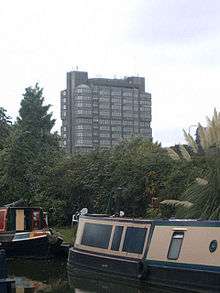
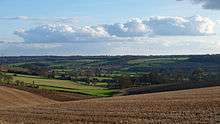
Ceremonial
The ceremonial county of Buckinghamshire consists of the area administered by Buckinghamshire Council and by Milton Keynes Borough Council. The ceremonial county has a Lord Lieutenant and a High Sheriff. Currently the Lord Lieutenant of Buckinghamshire is Sir Henry Aubrey-Fletcher and the High Sheriff of Buckinghamshire is Amanda Nicholson. The office of Custos rotulorum has been combined with that of Lord Lieutenant since 1702.
Buckinghamshire County Council (1889–2020)
Until 31 March 2020, the ceremonial county had two top-level administrations: Buckinghamshire County Council, which administered about four-fifths of the county and the Borough of Milton Keynes, a unitary authority, which administers the remaining fifth. There were four district councils that are subsidiary to the county council: Aylesbury Vale, Chiltern, South Bucks and Wycombe districts.
The county council was founded in 1889 with its base in new municipal buildings in Walton Street, Aylesbury (which are still there). In Buckinghamshire, local administration was run on a two-tier system where public services were split between the county council and a number of district councils.
In 1966 the council moved into new premises: a 15-storey tower block in the centre of Aylesbury (pictured) designed by county architect Fred Pooley. It is now a Grade II listed building.
In 1997 the northernmost[13] part of Buckinghamshire, then Milton Keynes District, was separated to form a unitary authority, the Borough of Milton Keynes; for ceremonial purposes Milton Keynes remains part of Buckinghamshire.[14]
Buckinghamshire County Council was a large employer in the county and provided a variety of services, including education (schools, adult education and youth services), social services, highways, libraries, County Archives and Record Office, the County Museum and the Roald Dahl Children's Gallery in Aylesbury, consumer services and some aspects of waste disposal and planning.
Buckinghamshire Council (2020 onwards)
Buckinghamshire Council is a unitary authority covering most of the ceremonial county of Buckinghamshire.[15] It was created in April 2020 from the areas that were previously administered by Buckinghamshire County Council and the district councils of South Bucks, Chiltern, Wycombe, Aylesbury Vale.
Milton Keynes Council
Milton Keynes Council was formed by the Local Government Act 1972 as the Milton Keynes District Council, subordinate to Buckinghamshire County Council. The (district) council was first elected in 1973, a year before formally coming into its powers and prior to the creation of the District of Milton Keynes on 1 April 1974. The council gained borough status, entitling it to be known as Milton Keynes Borough Council and to annually appoint a (ceremonial) Mayor of Milton Keynes.[16][17] On 1 April 1997, it became a self-governing unitary authority.
Flag
The traditional flag of Buckinghamshire comprises a chained swan on a bicolour of red and black. The flag was registered with the Flag Institute on 20 May 2011.
Coat of arms
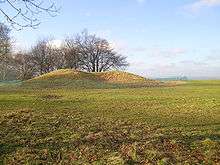
The coat of arms of the former Buckinghamshire County Council features a white swan in chains. This dates back to the Anglo-Saxon period, when swans were bred in Buckinghamshire for the king's pleasure. That the swan is in chains illustrates that the swan is bound to the monarch, an ancient law that still applies to wild swans in the UK today. The arms were first borne at the Battle of Agincourt by the Duke of Buckingham.
Above the swan is a gold band, in the centre of which is Whiteleaf Cross, representing the many ancient landmarks of the county. The shield is surmounted by a beech tree, representing the Chiltern Forest that once covered almost half the county. Either side of the shield are a buck, for Buckingham, and a swan, the county symbol.
The motto of the shield is Vestigia Nulla Retrorsum. This is Latin and means 'no stepping back' (or 'no steps backwards').[18]
Economy
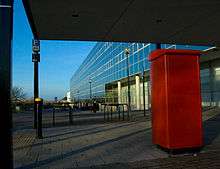

Buckinghamshire has a modern service-based economy and is part of the Berkshire, Buckinghamshire and Oxfordshire NUTS-2 region, which was the seventh richest subregion in the European Union in 2002.[19] As well as the highest GDP per capita outside Inner London, Buckinghamshire has the highest quality of life, the highest life expectancy and the best education results in the country.[20] The southern part of the county is a prosperous section of the London commuter belt. The county has fertile agricultural lands, with many landed estates, especially those of the Rothschild banking family of England in the 19th century (see Rothschild properties in England). The county has several annual agricultural shows, with the Bucks County Show established in 1859. Manufacturing industries include furniture-making (traditionally centred at High Wycombe), pharmaceuticals and agricultural processing. Pinewood Studios in Iver Heath is a principal centre of operations for film and TV production in the UK.
This is a chart of trend of regional gross value added of Buckinghamshire at current basic prices published by the Office for National Statistics with figures in millions of British Pounds sterling (except GVA index).[21]
| Year | Regional Gross Value Added[22] | Agriculture[23] | Industry[24] | Services[25] | GVA index per person[26] |
|---|---|---|---|---|---|
| 1995 | 6,008 | 60 | 1,746 | 4,201 | 118 |
| 2000 | 8,389 | 45 | 1,863 | 6,481 | 125 |
| 2003 | 9,171 | 50 | 1,793 | 7,328 | 118 |
Places of interest


Buckinghamshire is notable for its open countryside and natural features, including the Chiltern Hills Area of Outstanding Natural Beauty, Stowe Landscaped Gardens near Buckingham, and the River Thames.[27] The Ridgeway Path, a long-distance footpath, passes through the county. The county also has many historic houses. Some of these are opened to the public by the National Trust, such as Waddesdon Manor, West Wycombe Park and Cliveden.[28] Other historic houses are still in use as private homes, such as the Prime Minister's country retreat Chequers.[29]
Claydon House (near Steeple Claydon), Hughendon Manor (near High Wycombe), Stowe Landscaped Gardens, and Waddesdon Manor (near Aylesbury) are in the care of the National Trust.
Bletchley Park in Milton Keynes is the site of World War II British codebreaking and Colossus, the world's first programmable electronic digital computer. Together with the co-located National Museum of Computing, it is a nationally important visitor attraction. Pinewood Studios.
Buckinghamshire is the home of various notable people in connection with whom tourist attractions have been established: for example the author Roald Dahl who included many local features and characters in his works.[30][31]
Sports facilities in Buckinghamshire include half of the international Silverstone Circuit which straddles the Buckinghamshire and Northamptonshire border, the Adams Park Stadium in the south and Stadium MK in the north, and Dorney Lake (named 'Eton Dorney' for the event) was used as the rowing venue for the 2012 Summer Olympics.
Transport
Roads
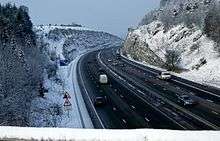
.jpg)
Buckinghamshire (including Milton Keynes) is served by four motorways, although two are on its borders:
- M40 motorway: cuts through the south of the county serving towns such as High Wycombe and Beaconsfield
- M1 motorway: serves Milton Keynes in the north
- M25 motorway: passes into Bucks but has only one junction (J16-interchange for the M40)
- M4 motorway: passes through the very south of the county with only J7 in Bucks
Five important A roads also enter the county (from north to south):
- A5: serves Milton Keynes
- A421: serves Milton Keynes and Buckingham and links the M1 to the M40
- A41: cuts through the centre of the county from Watford to Bicester, serving Aylesbury
- A40: parallels M40 through south Bucks and continues to Central London
- A4: serves Taplow in the very south
Also less important primary A roads enter the country:
- A4146:runs from Leighton Buzzard in Bedfordshire to Milton Keynes
- A4010:runs from M40 J4 (High Wycombe) to Stoke Mandeville
- A404:serves Marlow and High Wycombe
- A509 serves the north of the county through Olney, crossing but the M1 to meet the A5 in Milton Keynes.
The county is poorly served with internal routes, with the A413 and A418 linking the south and north of the county.
Rail

As part of the London commuter belt, Buckinghamshire is well connected to the national rail network, with both local commuter and inter-city services serving some destinations.
Chiltern Railways is a principal train operating company in Buckinghamshire, providing the majority of local commuter services from the centre and south of the county, with trains running into London Marylebone. Great Western operates commuter services from Taplow and Iver into London Paddington. West Midlands Trains provides these services from Milton Keynes Central into Euston or Birmingham New Street, and Southern operates commuter services via the West London Line from Milton Keynes Central to East Croydon.
Avanti West Coast operates inter-city services from Milton Keynes Central to Euston, North West England, the West Midlands, the Scottish Central Belt, and North Wales. Great Western operates non-stop services through the south of the county from Paddington to South West England and South Wales.
There are four main lines running through the county:
- The West Coast Main Line in the north of the county serves stations in Milton Keynes
- London to Aylesbury Line serves Aylesbury and other settlements along the A413 towards London. Once part of the Metropolitan line of London Underground, which now runs to Amersham
- Chiltern Main Line: serves the towns along the M40 motorway including High Wycombe and Beaconsfield
- Great Western Main Line: runs through Slough. Slough is now in Berkshire, but the line enters Bucks twice, on either side of Slough, with Taplow and Iver both having stations in Buckinghamshire.
There are the following additional lines:
- Princes Risborough to Aylesbury Line: a single track branch that connects the Chiltern Main Line to the London to Aylesbury Line.
- Marston Vale Line: between Bletchley and Bedford. This is a remnant of the former Varsity Line between Oxford and Cambridge
- Marlow Branch Line: between Marlow, Bourne End and Maidenhead.
- Metropolitan line: between Amersham and Chesham to London
- Chinnor and Princes Risborough Railway, a preserved railway.
From 2020, Iver is to be served by Elizabeth line services. From 2024,[32] East West Rail is to reinstate the route via Winslow between Oxford and Bletchley, enabling services to Milton Keynes Central. The line between Aylesbury and Claydon Junction may also be reinstated in the same programme, enabling services between Aylesbury and Milton Keynes. The proposed High Speed 2 is planned to run non-stop through the county at some future date.
Settlements
| Town | Population[33] | District | Notes |
|---|---|---|---|
| Milton Keynes | 229,941 | Borough of Milton Keynes | Unitary Authority since 1997. At the 2011 census, the population of the Milton Keynes Urban Area, which includes Newport Pagnell and Woburn Sands was 236,700 |
| High Wycombe | 120,256 | Buckinghamshire | Includes suburbs of Downley and Hazlemere.[6] The High Wycombe Urban Area population is 133,204 |
| Aylesbury | 71,977 | Buckinghamshire | County town of Buckinghamshire. Population of Aylesbury Urban Area (including Stoke Mandeville and Bierton) is 74,748 |
| Amersham | 23,086 | Buckinghamshire | Part of Amersham/Chesham urban area with a population of 46,122. |
| Chesham | 22,356 | Buckinghamshire | Part of Amersham/Chesham urban area with a population of 46,122. |
| Gerrards Cross | 20,633 | Buckinghamshire | Includes Chalfont St Peter. The area lacks town status but is the 5th largest conurbation in the county. |
| Marlow | 18,261 | Buckinghamshire | |
| Newport Pagnell | 15,118 | Borough of Milton Keynes | Governed by Milton Keynes Council, not Buckinghamshire County Council. Part of the Milton Keynes Urban Area. |
| Beaconsfield | 13,797 | Buckinghamshire | |
| Buckingham | 12,890 | Buckinghamshire | Historically the county town of Buckinghamshire |
| Princes Risborough | 8,231 | Buckinghamshire | |
| Wendover | 7,702 | Buckinghamshire | |
| Olney | 6,477 | Borough of Milton Keynes | Governed by Milton Keynes Council, not Buckinghamshire County Council |
| Winslow | 4,407 | Buckinghamshire |
For the full list of towns, villages and hamlets in Buckinghamshire, see List of places in Buckinghamshire. Throughout history, there have been a number of changes to the Buckinghamshire boundary.
Education
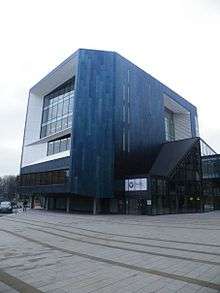
Education in Buckinghamshire is governed by two Local Education Authorities. Buckinghamshire Council is one of the few remaining LEAs still using the tripartite system, albeit with some revisions such as the abolition of secondary technical schools. It has a completely selective education system: pupils transfer either to a grammar school or to a secondary modern school or free school depending on how they perform in the Eleven-Plus exam and on their preferences. Pupils who do not take the test can only be allocated places at secondary modern schools or free school. There are 9 independent schools and 34 maintained (state) secondary schools, not including sixth form colleges, in the county council area. There is also the Buckinghamshire University Technical College which offers secondary education from age 14. The unitary authority of Milton Keynes operates a comprehensive education system: there are 8 maintained (state) secondary schools in the borough council area.
Buckinghamshire is also home to the University of Buckingham, Buckinghamshire New University, the National Film and Television School, the Open University and the University Campus Milton Keynes.
Notable people

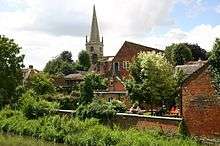
Buckinghamshire is the birthplace and/or final resting place of several notable individuals. St Osyth was born in Quarrendon and was buried in Aylesbury in the 7th century[34] while at about the same time Saint Rumwold was buried in Buckingham.[35] In the medieval period Roger of Wendover was, as the name suggests, from Wendover[36] and Anne Boleyn also owned property in the same town.[37] It is said that King Henry VIII made Aylesbury the county town in preference to Buckingham because Boleyn's father owned property there and was a regular visitor himself.[38] Other medieval residents included Edward the Confessor, who had a palace at Brill,[39] and John Wycliffe who lived in Ludgershall.[40]
Buckinghamshire later became home to some notable literary characters. Edmund Waller was brought up in Beaconsfield and served as Member of Parliament for both Amersham and Wycombe. Mary Shelley and her husand Percy Bysshe Shelley lived for some time in Marlow, attracted to the town by their friend Thomas Love Peacock who also lived there.[41] John Milton lived in Chalfont St Giles and his cottage can still be visited there[42] and John Wilkes was MP for Aylesbury.[43] Later authors include Jerome K. Jerome who lived at Marlow,[44] T. S. Eliot who also lived at Marlow,[45] Roald Dahl who lived at Great Missenden,[46] Enid Blyton who lived in Beaconsfield[47] and Edgar Wallace who lived at Bourne End[48] and is buried in Little Marlow.[49] Modern-day writers from Bucks include Terry Pratchett who was born in Beaconsfield,[50] Tim Rice who is from Amersham[51] and Andy Riley who is from Aylesbury.
During the Second World War a number of European politicians and statesmen were exiled in England. Many of these settled in Bucks as it is close to London. President Edvard Beneš of Czechoslovakia lived at Aston Abbotts with his family while some of his officials were stationed at nearby Addington and Wingrave.[52] Meanwhile, Władysław Sikorski, military leader of Poland, lived at Iver[53] and King Zog of Albania lived at Frieth.[54] Much earlier, King Louis XVIII of France lived in exile at Hartwell House from 1809 to 1814.
Also on the local political stage Buckinghamshire has been home to Nancy Astor who lived in Cliveden,[55] Frederick, Prince of Wales who also lived in Cliveden,[56] Baron Carrington who lives in Bledlow,[57] Benjamin Disraeli who lived at Hughenden Manor and was made Earl of Beaconsfield,[58] John Hampden who was from Great Hampden and is revered in Aylesbury to this day[5] and Prime Minister Archibald Primrose, 5th Earl of Rosebery who lived at Mentmore.[59] Also worthy of note are William Penn who believed he was descended from the Penn family of Penn and so is buried nearby[60] and the current Prime Minister of the United Kingdom, who has an official residence at Chequers. John Archdale, the colonial governor of North Carolina and South Carolina, was born in Buckinghamshire.[61]
Other notable natives of Buckinghamshire include:
- Amber Bain, musician, known as The Japanese House
- Errol Barnett, news reporter, was born in Milton Keynes
- Nick Beggs, musician, is from Winslow
- Lynda Bellingham, actress, was from Aylesbury
- Emily Bergl, actress, born in Milton Keynes, Buckinghamshire, though her family moved to suburban Chicago a few years after her birth
- Emmerson Boyce, Wigan Athletic footballer, was born in Aylesbury
- Nick Bracegirdle aka Chicane, was born in Chalfont St Giles
- Den Brotheridge, British Army Officer who died taking Pegasus Bridge in France was from Aylesbury
- Charles Butler, pastor, grammarian, and pioneering beekeeper was born in the county.
- Giles Cooper, entertainment producer, best known for Royal Variety Performance. Born in Amersham, brought up in High Wycombe.
- James Corden, actor, grew up in Hazlemere[62][63]
- John Crowder (1756–1830), alderman of the ward of Farringdon Within, and Lord Mayor of London
- Lucinda Dryzek, actress, born in High Wycombe in South Bucks
- Emma Ferreira English contemporary artist, sculptor, photographer, entrepreneur and philanthropist
- Martin Grech, musician, is from Aylesbury
- Julian Haviland, former Political Editor of both ITN and The Times newspaper, was born and brought up in Iver Heath in Iver
- Howard Jones, musician, is from High Wycombe
- Prince Michael of Kent, member of the British Royal Family, born in Iver in South Bucks
- Arthur Lasenby Liberty, merchant, was from Chesham
- Richard Lee, footballer, attended Aylesbury Grammar School
- Jonathon Lewis, England test cricketer, was born in Aylesbury
- Al Murray, television/radio presenter also known as The Pub Landlord originates from Stewkley
- John Otway, musician, is from Aylesbury
- Leigh-Anne Pinnock, singer and member of 2011 X-Factor winning girl group Little Mix, born in High Wycombe
- Matt Phillips, footballer playing for Queens Park Rangers F.C., was born in Aylesbury
- Dominic Raab, politician, Conservative Party Member of Parliament and current Foreign Secretary, grew up in Gerrards Cross and attended Dr Challoner's Grammar School in Amersham
- Steve Redgrave, five-time Olympic gold medallist rower is from Marlow Bottom
- Tim Rice, lyricist and author, lives in Amersham
- George Gilbert Scott, architect famous for his numerous Gothic revival buildings, born in Gawcott
- Simon Standage, Baroque violinist, is from High Wycombe
- Justin Sullivan, musician with New Model Army
- Michael York, actor, born in Fulmer in South Bucks
- Jack Garratt, singer and songwriter, is from Little Chalfont.
Celebrities living in Bucks include:
- Cilla Black, television presenter, lived in Denham[64]
- Fern Britton, television presenter, lives in Holmer Green[65]
- Melanie Brown, musician, lived in Little Marlow
- Roy Castle, dancer, singer, comedian, actor, television presenter and musician lived in Gerrards Cross
- John Craven, television presenter, lives in Princes Risborough
- Tess Daly has a house in Fulmer
- Iain Duncan Smith, politician, lives in Swanbourne
- Ian Dury, musician, lived in Wingrave
- Noel Edmonds, television presenter, once lived in Weston Turville
- Andrew Fletcher, musician with Depeche Mode, has a home in Marlow
- Barry Gibb, musician from Bee Gees, lives in Beaconsfield
- Sir John Gielgud, actor, was living in Wotton Underwood when he died
- Sir David Jason, actor, lives in Ellesborough
- Peter Jones, businessman, lives in Beaconsfield
- Jason "Jay" Kay, musician and frontman of Jamiroquai, lives in Horsenden
- Vernon Kay has a house in Fulmer
- John Laurie, actor, lived in Chalfont St Peter
- Hayley Mills and Roy Boulting lived in Ibstone
- John Mills, actor, lived in Denham
- Mike Oldfield, musician, once lived in Little Chalfont
- Nduka Onwuegbute, playwright, lives in Aylesbury
- Ozzy Osbourne, musician, has a home in Jordans
- Pauline Quirke, actress, lives in Penn
- Joan G. Robinson, author and illustrator
- Steve Rothery, musician with Marillion, lives in Whitchurch
- Rothschild family, bankers, had houses in Ascott, Aston Clinton, Eythrope, Halton, Mentmore and Waddesdon
- Tiny Rowland, businessman, lived in Hedsor
- Chris Standring, jazz guitarist and musician
- Jackie Stewart, former racing driver, lives in Ellesborough
- Andrew Strauss, England cricket captain, lives in Marlow
- Dave Vitty, former BBC Radio 1 DJ, lives in Fulmer
- Mark Webber, former Formula 1 racing driver, lives in Aston Clinton
- Terry Wogan, radio and television broadcaster, lived in Taplow
See also
- Duke of Buckingham
- Lord Lieutenant of Buckinghamshire
- High Sheriff of Buckinghamshire
- Architecture of Aylesbury
- Bucks County, Pennsylvania
- Wendover Woods
- Centre for Buckinghamshire Studies—Archives, Record Office, Local History and Family History
- Safety Centre
Notes
- "No. 62943". The London Gazette. 13 March 2020. p. 5161.
- EB (1878).
- Spence, Graham. "Beaconsfield is the most expensive market town in England". Get Bucks. Archived from the original on 22 December 2015. Retrieved 15 December 2015.
- "How expensive are the houses in your street? Beaconsfield is the most pricey - Chesham the least". Get Bucks. Archived from the original on 22 December 2015. Retrieved 15 December 2015.
- "Biography of John Hampden". Johnhampden.org. Archived from the original on 8 September 2010. Retrieved 19 September 2010.
- "High Wycombe Local Community Area Profile" (PDF). Buckinghamshire County Council. October 2008. Archived from the original (PDF) on 6 June 2012.
- "About Buckingham". University of Buckingham. Archived from the original on 10 September 2015. Retrieved 15 December 2015.
- "College Lake". BBOWT. Archived from the original on 24 October 2015. Retrieved 12 November 2015.
- "2011 Census: KS101EW Usual resident population, local authorities in England and Wales". Archived from the original on 5 January 2016. Retrieved 11 December 2012.
- "Milton Keynes intelligence Observatory". Archived from the original on 1 July 2012.
- "Aylesbury Local Community Area Profile" (PDF). Buckinghamshire County Council. February 2007. Archived from the original (PDF) on 6 June 2012.
- "Profile of Chesham". Chesham Town Council. January 2009. Archived from the original on 20 April 2012. Retrieved 8 December 2011.
- The part of Buckinghamshire north of the Varsity Line together with Bow Brickhill, Woburn Sands and parts of Bletchley and Fenny Stratford.
- "Lieutenancies Act 1997", legislation.gov.uk, The National Archives, 1997 c. 23
- "Bucks County Council takes final curtain call after 131 years". Bucks Herald. 16 March 2020. Retrieved 28 March 2020.
- "District Councils and Boroughs". Hansard 1803–2005. Parliament of the United Kingdom. 28 March 1974. Archived from the original on 25 December 2012. Retrieved 16 January 2012.
- "Table III(a)". Local Government in England and wales. a Guide to the New System. London: HMSO. 1974. pp. 15–109. ISBN 0117508470.
- Pine, L.G. (1983). A dictionary of mottoes (1 ed.). London: Routledge & Kegan Paul. p. 249. ISBN 0-7100-9339-X.
- "''Regional GDP per capita in the EU25 GDP per capita in 2002 ranged from 32% of the EU25 average in Lubelskie to 315% in Inner London''". Europa (web portal). 25 January 2005. Archived from the original on 6 February 2009. Retrieved 19 September 2010.
- Burridge, Nicky (29 March 2008). "Buckinghamshire is best county". The Independent. London. Archived from the original on 20 August 2009. Retrieved 15 January 2009.
- Office for National Statistics Archived 25 May 2006 at the Wayback Machine (pp.240–253)
- Components may not sum to totals due to rounding
- includes hunting and forestry
- includes energy and construction
- includes financial intermediation services indirectly measured
- UK average index base = 100
- "Welcome to Buckinghamshire!". Visit Buckinghamshire. Archived from the original on 22 August 2010. Retrieved 19 August 2010.
- "The National Trust". Visit Buckinghamshire. Archived from the original on 23 July 2010. Retrieved 19 August 2010.
- Savage, Mike (12 March 2010). "View from the new 250mph rail route". The Independent. UK. Archived from the original on 15 March 2010. Retrieved 19 August 2010.
- "Roald Dahl Trail". Visit Buckinghamshire. Archived from the original on 24 July 2010. Retrieved 19 August 2010.
- Dale, Louise (14 August 2010). "The best family days out". The Guardian. UK. Archived from the original on 17 October 2015. Retrieved 19 August 2010.
- "Oxford to Bedford: the Western Section of East West Rail is already being delivered". East West Rail Ltd. 2019. Retrieved 23 January 2020.
- "2011 Census – Built-up areas". ONS. Archived from the original on 21 September 2013. Retrieved 4 July 2013.
- Tendring District Council Conservation Area Review Archived 3 July 2007 at the Wayback Machine (pdf)
- "Biography of St Rumwold, University of Buckingham". Buckingham.ac.uk. 19 August 2008. Archived from the original on 18 February 2010. Retrieved 19 September 2010.
- "Medieval Sourcebook: Roger of Wendover". Fordham.edu. Archived from the original on 4 December 2010. Retrieved 19 September 2010.
- Picture Tour at Chiltern Web Archived 14 September 2007 at the Wayback Machine
- "Aylesbury Tourist Information". Aboutbritain.com. Archived from the original on 9 September 2010. Retrieved 19 September 2010.
- Genuki guide to Brill Archived 12 September 2011 at the Wayback Machine
- "Biography of John Wycliffe". Archived from the original on 3 February 2012. Retrieved 8 December 2011.
- James Mulvihill (University of Alberta) (13 January 2005). "Biography of Thomas Love Peacock". Litencyc.com. Archived from the original on 28 December 2010. Retrieved 19 September 2010.
- "Milton's Cottage website". Archived from the original on 17 June 2007. Retrieved 30 May 2007.
- "Review of a biography of John Wilkes". Aylesburytowncouncil.gov.uk. Archived from the original on 17 July 2011. Retrieved 19 September 2010.
- "Literary guide to Marlow". Marlowtown.co.uk. Archived from the original on 14 May 2011. Retrieved 19 September 2010.
- "Tourist guide to Marlow". Riverthames.co.uk. Archived from the original on 5 January 2011. Retrieved 19 September 2010.
- "About Britain.com". About Britain.com. Archived from the original on 14 September 2010. Retrieved 19 September 2010.
- "Guide to Beaconsfield". Beaconsfield.co.uk. Archived from the original on 2 February 2010. Retrieved 19 September 2010.
- "Bourne End online". Bourneend.org.uk. Archived from the original on 26 July 2011. Retrieved 19 September 2010.
- "Biography of Edgar Wallace". Online-literature.com. Archived from the original on 20 August 2010. Retrieved 19 September 2010.
- "Biography of Terry Pratchett". Lspace.org. Archived from the original on 14 May 2011. Retrieved 19 September 2010.
- Tim Rice on IMDb
- "Czechs in Exile at Aston Abbotts". Czechsinexile.org. Archived from the original on 15 May 2011. Retrieved 19 September 2010.
- "Polish government comparison". Czechs in Exile. Archived from the original on 15 May 2011. Retrieved 19 September 2010.
- Court of King Zog Research Society Archived 14 May 2011 at the Wayback Machine
- "Guide to Cliveden". Thames-search.com. Archived from the original on 16 April 2008. Retrieved 19 September 2010.
- John Darnton (4 August 1996). "Travel Supplement". New York Times. Buckinghamshire (Eng). Archived from the original on 28 July 2018. Retrieved 19 September 2010.
- "Bledlow". Visit Buckinghamshire. Archived from the original on 26 July 2011. Retrieved 19 September 2010.
- Greenwood, Frederick (1911). . In Chisholm, Hugh (ed.). Encyclopædia Britannica. 3 (11th ed.). Cambridge University Press. pp. 563–571.
- Genuki guide to Mentmore Archived 9 September 2011 at the Wayback Machine
- "Biography of William Penn". Archived from the original on 10 April 2007. Retrieved 30 May 2007.
- Who Was Who in America, Historical Volume, 1607–1896. Chicago: Marquis Who's Who. 1963.
- "From Smithy to Stateside A-lister: James Corden's rise to fame".
- "The Late Late Show host James Corden, originally from Hazlemere, sparks social media frenzy after tweeting about High Wycombe".
- Davies, Caroline (3 June 2006). "Cilla Black 'is a neighbour from hell'". The Daily Telegraph. Archived from the original on 3 May 2017. Retrieved 3 April 2018.
- Jefferies, Mark (3 September 2008). "Fern Britton: I fear my mugged son could join gang". The Mirror. Archived from the original on 16 July 2009. Retrieved 3 April 2018.
References

- Chisholm, Hugh, ed. (1911), , Encyclopædia Britannica, 4 (11th ed.), Cambridge University Press, pp. 728–731
External links
| Wikimedia Commons has media related to Buckinghamshire. |
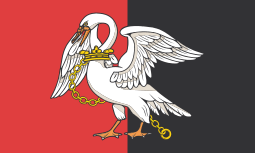
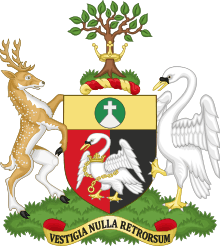
.jpg)